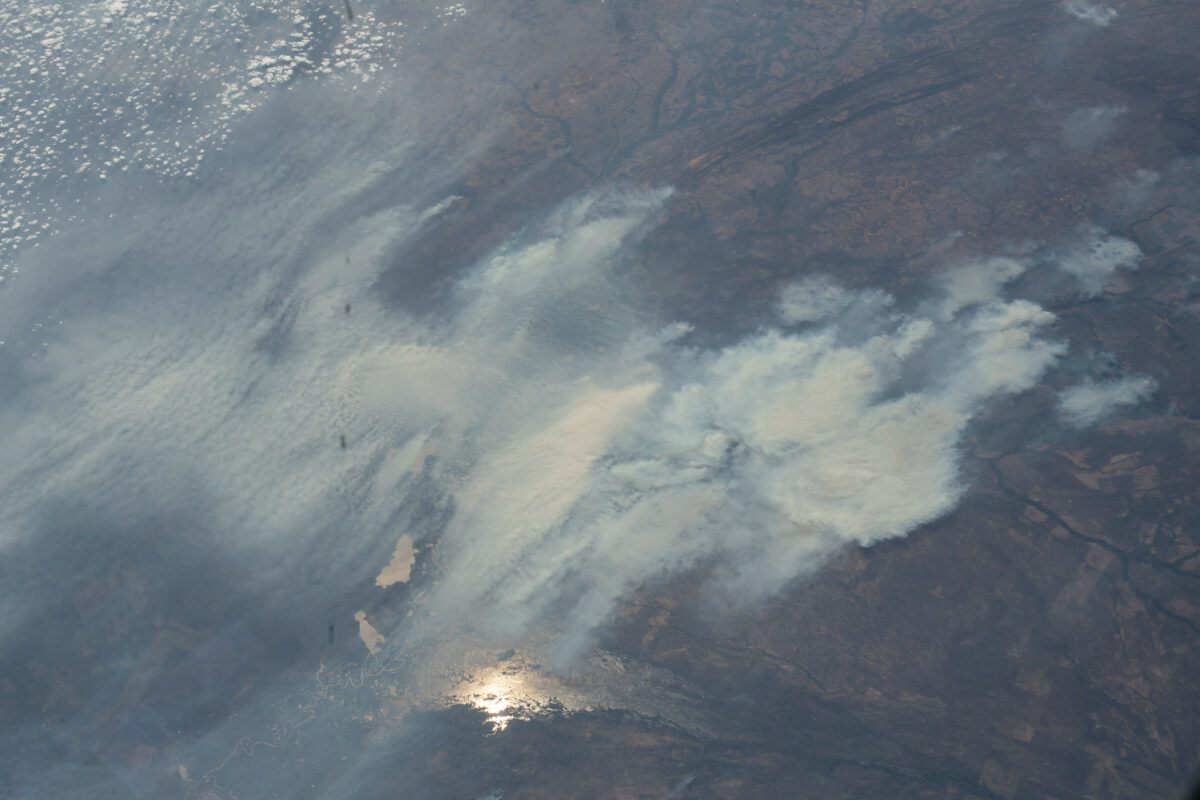Indigenous leaders and scientists on Monday revealed research showing that the destruction of the Amazon rainforest is so advanced that some swaths may have hit a key tipping point and never recover.
While experts have long warned of human activity causing portions of the massive, biodiverse rainforest to shift to savannah, the new findings were unveiled on the Global Day of Action for the Amazon and the launch of the 5th Amazon Summit of Indigenous Peoples: Solutions for a Living Amazon in Lima, Peru.
The study—a project of the Amazonian Network of Georeferenced Socio-environmental Information (RAISG) and Coordinator of Indigenous Organizations of the Amazon Basin (COICA)—covers all nine countries home to parts of the Amazon: Bolivia, Brazil, Colombia, Ecuador, French Guiana, Guyana, Peru, Suriname, and Venezuela.
Researchers behind the study, entitled Amazonia Against the Clock, looked at forest coverage data from 1985 to 2020—examining density, carbon dioxide storage, and rain patterns.
“The rainforest’s abilities to store carbon and regulate precipitation are indicators of its capacity to survive… and studying them can also reveal the effects of forest fires beneath the canopy, which satellite images can miss,” New Scientist reported, summarizing Marlene Quintanilla of RAISG.
“The ecological response of the forest is changing and its resilience is being lost,” Quintanilla said. “We are at a point of no return.”
#vcumbreamazonica l Reconocimiento por parte de los líderes y lideresas indígenas de los nueve países de la cuenca amazónica a Evaristo Nugkuag por ser un líder histórico y uno de los fundadores de COICA hace 38 años. pic.twitter.com/BKdHqFlx2N
— COICA ORG (@coicaorg) September 5, 2022
The analysis found that while 33% of the rainforest is in great shape and 41% has been so minimally degraded that it can restore itself, 20% is beyond saving and the remaining 6% requires human intervention to be restored.
“The tipping point is not a future scenario but rather a stage already present in some areas of the region,” the study states, according to The Guardian. “Brazil and Bolivia concentrate 90% of all combined deforestation and degradation. As a result, savannization is already taking place in both countries.”
The newspaper noted that the report indicates only French Guiana and Suriname have at least half their forests still intact.
The researchers also found that 86% of deforestation has occurred outside national or Indigenous reserves, and nearly half of the Amazon is not protected by such designations.
In response to the crisis in the rainforest—driven by agribusiness, dams, logging, mining, oil extraction, and other destructive activities—Indigenous groups, led by COICA, have launched the initiative “Amazonia for Life: Protect 80% by 2025.”
A joint declaration—open for signatures from “Indigenous communities, scientists, governments, cities, financial institutions, and anyone ready to take action for the planet”—calls for a global pact and outlines 13 requirements for reaching the protection goal.
“It’s difficult but doable,” Ecuadorian scientist Alicia Guzmán, who coordinated the new report, said of the 80% target. “It is all dependent on the involvement of the Indigenous communities and people who live in the forest. That and the debt.”
The report says that governments of the nine Amazon nations, international financial institutions, and private equity firms “have a unique opportunity before them to forgive existing debt in exchange for commitments to end industrial extraction and promote protections in key priority areas, Indigenous territories, and protected areas.”
Highlighting the study’s findings that lands under Indigenous control across the Amazon are in better condition, Guzmán also emphasized the importance of empowering them as stewards.
“Having Indigenous people in the decision-making process means we count on the knowledge of those who know most about the forest,” she told The Guardian. “And they need budgets.”
"More fires burned in the Brazilian Amazon rainforest this August than in any month in nearly five years, thanks to a surge in illegal deforestation. Satellite sensors detected 33,116 fires according to Brazil’s national space institute."https://t.co/P5vEQ0d1oL
— Amazon Watch (@amazonwatch) September 5, 2022
The study and summit follow a weekend reminder of the dangers faced by protectors of the Amazon, particularly Indigenous people. The nonprofit Indigenist Missionary Council announced that two members of a Brazilian Indigenous group that combats illegal deforestation were killed.
“Forest guard Janildo Oliveira Guajajara was killed with multiple gunshots from behind, while another Guajajara man who was shot in the Saturday morning attack survived and is in a health unit,” The Associated Press reported, citing the group. “In a separate municipality of Maranhao, Jael Carlos Miranda Guajajara was run over by an unspecified vehicle the same morning, and members of his group suspect it was a targeted killing.”
Those deaths follow the killings of Brazilian Indigenous expert Bruno Pereira and British journalist Dom Phillips in the rainforest in Brazil earlier this year.
While critics of far-right Brazilian President Jair Bolsonaro say that in addition to promoting activities causing deforestation in the Amazon, he has incited violence against the rainforest’s defenders, the incumbent could soon be out of power.
In October, Bolsonaro is set to face off against former President Luiz Inácio Lula da Silva, who is currently ahead in the polls. If elected, Lula has vowed to reverse many Bolsonaro policies and make protecting the Amazon a top priority.
